JOHN McDONALD: Yayoi Kusama’s exhibition at NGV shows the evolution of an artist at the peak of her powers
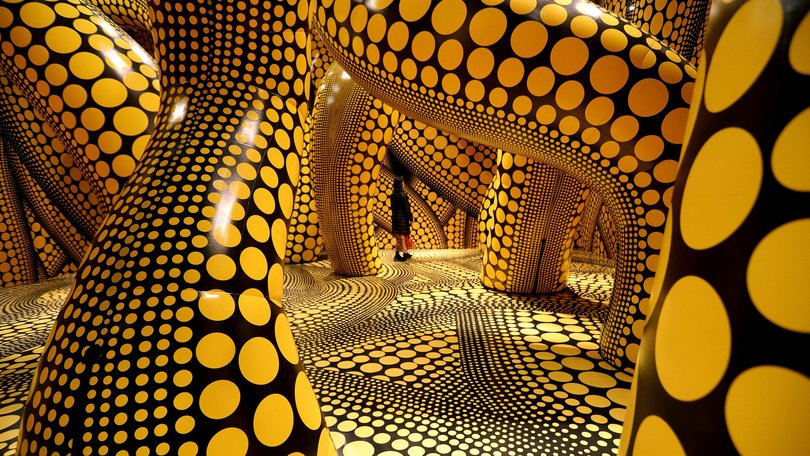
As a teenager, growing up in the provincial city of Matsumoto, Yayoi Kusama had a dream. She wanted to conquer the world - or rather she wanted to be the most famous artist on the planet. Today, at the age of 95, she has succeeded. The exhibition at the National Gallery of Victoria is one of the biggest - possibly the biggest – ever devoted to her work.
The NGV, which has a better understanding of audiences than any other art museum in Australia, has put in a monumental effort. The curatorial team, led by Wayne Crothers and Miranda Wallace, has produced an exceptional show, which allows viewers to follow Kusama’s evolution from her earliest days in Matsumoto, to her current eminence as arguably the world’s most popular living artist – with only David Hockney as competition.
The show is divided into two parts on either side of the gallery’s entrance foyer, with the second part containing the most eye-catching installations. But to fully appreciate this immersive experience it’s necessary to absorb the lessons from part one, which demonstrate that Kusama is not all show business but an artist of exceptional ability – or “genius” as the Head of her Foundation, Akira Tatehata, says without hesitation. It’s a much-abused word, and usually met with the greatest suspicion, but if any artist deserves the title today, it’s this old lady with the intense glare and the bright red wig.
Sign up to The Nightly's newsletters.
Get the first look at the digital newspaper, curated daily stories and breaking headlines delivered to your inbox.
By continuing you agree to our Terms and Privacy Policy.What makes Kusama’s achievement even more noteworthy is that she has suffered for her entire adult life from a mental illness that would have been crippling to most people. In her case the opposite applies. No modern artist has been more prolific, more obsessively creative. In the early 1960s, when she lived in New York, she might work on one of her massive Infinity Net paintings for 50 hours without taking a break – a practice that would regularly land her in hospital.
In 2009, at the age of 80, Kusama started a new series called My Eternal Soul. She vowed to create a hundred paintings over the following 18 months, but the sequence would extend into 2021, totalling more than 900 pictures. As soon as she finished with My Eternal Soul, she began another series called Every Day I Pray for Love, which is ongoing.
All these works have been created, at a rate of more than one a day, either in her room at the clinic where she has lived for more than 40 years, or at a studio within walking distance. This arrangement has allowed her to avoid the pressures and distractions of everyday life. Nowadays, at the height of her popularity, she communicates directly with relatively few people, chief among them being her dealer, Hidenori Ota, and Tatehata.
Over the past couple of decades, Kusama’s output has extended far beyond paintings and drawings. She has designed large-scale public sculptures that have appeared all over the world, and the room-sized installations that have become guaranteed crowd-magnets. For this exhibition, the NGV has included no fewer than ten rooms, which viewers are able to visit for 30 seconds at a time, just long enough to take a few selfies and snatch a look at the work itself.
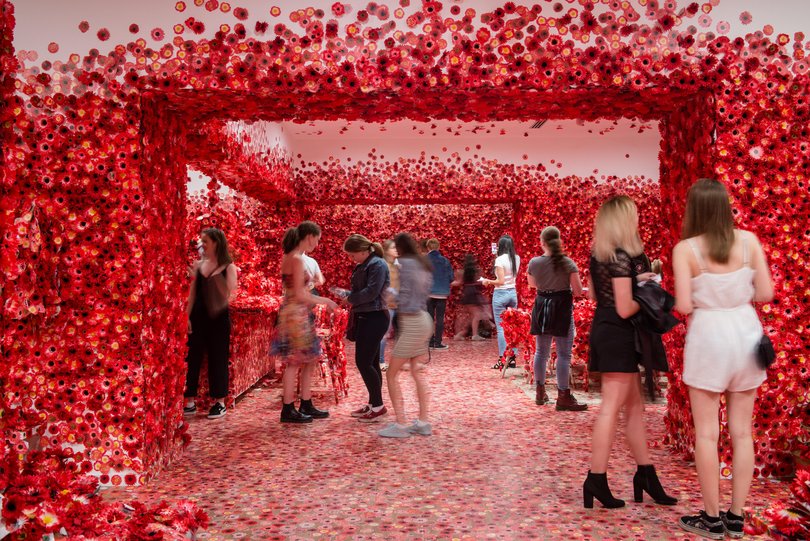
The first thing visitors will see, even before they enter the show, is an enormous bronze sculpture, called Dancing Pumpkin (2020). It’s big enough to stand underneath, as if it were a canopy. This work has been acquired by the gallery for a price I’m unable to reveal, but I can tell you it was substantially less than Lindy Lee’s much-hyped Ouroboros, for which the National Gallery of Australia shelled out at least $14 million.
It’s worth making this comparison because the Kusama sculpture is much bigger; made from bronze, immaculately finished, and has been imported from China, where the foundry is located. It’s also the work of one of the most popular, best-selling artists in the world today.
The Lee sculpture was made in Brisbane, is crudely finished, and is by an Australian artist with no overseas representation. Somehow, however, it’s vastly more expensive. I’ll leave you to draw your own conclusions.
One wonders how much the circular holes in Ouroboros owe to Kusama’s trademark all-over dots, as the effect is very similar.
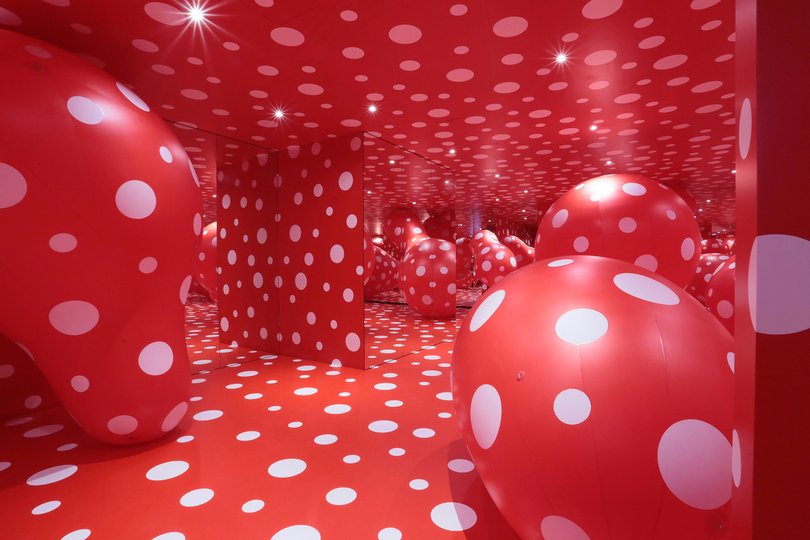
Beyond the sculptures and installations, the main activity that has lifted Kusama out of the rarefied domain of contemporary art, and given her a role in popular culture, is her collaboration with fashion house, Louis Vuitton. Kusama’s dots have appeared on handbags, luggage, wallets, ties, hats, blouses, jackets, sneakers, keyrings, sunglasses, and dozens of other products. No artist-fashion partnership has ever been so volcanically productive.
The dots are already present in the earliest work in this exhibition - a drawing of the artist’s mother made when Kusama was ten years old. She has frequently spoken about her dot obsession as a process of “obliteration”, in which the sense of self is lost in a storm of repetitive forms. It would become a guiding principle in her art and her philosophy of life. To overcome the terror of the loss of self, Kusama embraced repetition, firstly in the Infinity Net paintings, in which she would cover a large canvas with small, repeated loops of paint. The major work in the series, created in 1960, was ten metres long and filled the entire wall in a New York gallery. Today, only an offcut survives.
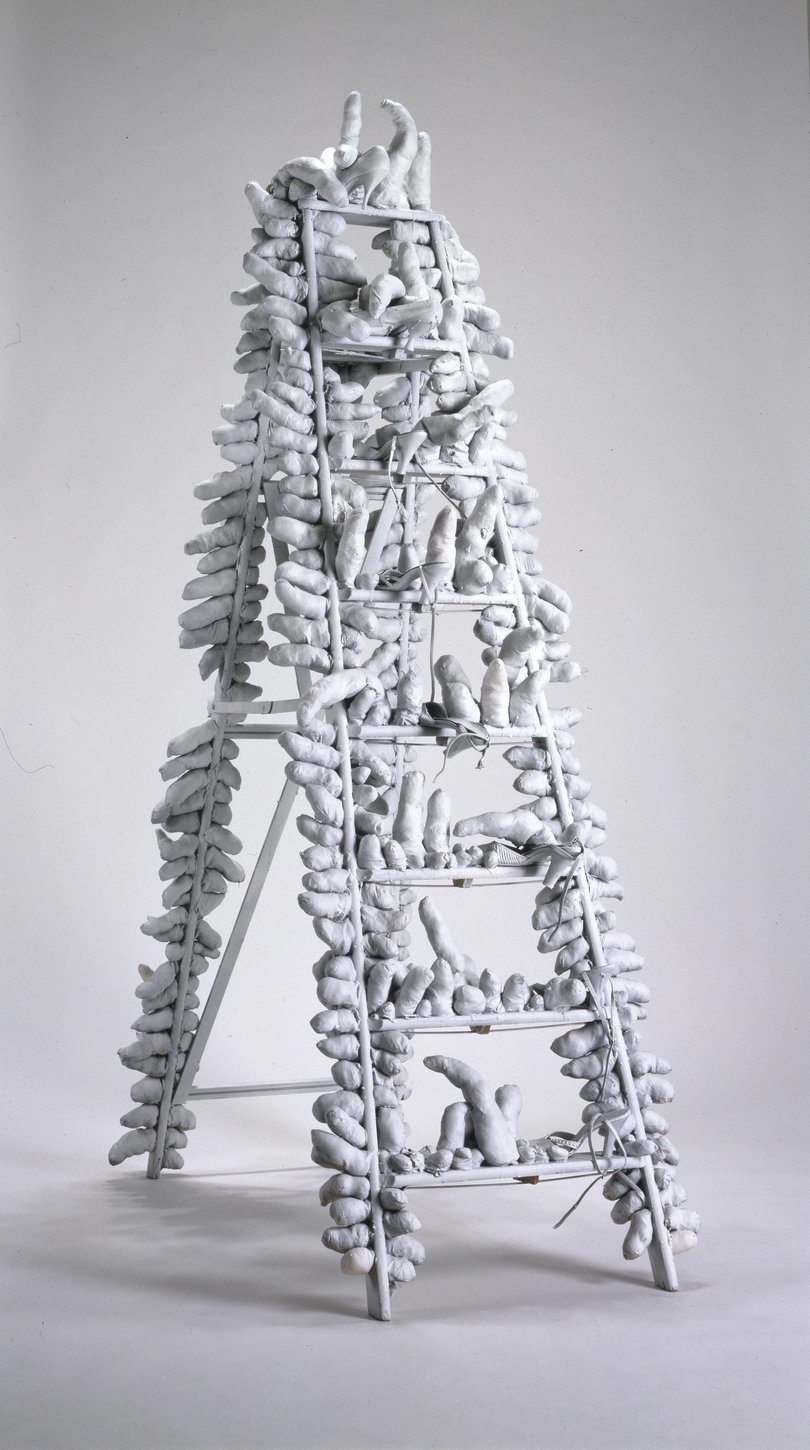
As the sixties progressed, Kusama turned to sculptures called Accumulations, in which objects such as a ladder, a rowboat, and a host of domestic items were covered in soft phallic shapes. These related to another of her phobias – a “fear of sex” she would confront by becoming the high priestess of sexual liberation, orchestrating dozens of nude performances in public places, publishing a newspaper called Orgy; even officiating at gay marriages, long before there was any thought of legalising the process. She made an experimental film called Kusama’s Self-Obliteration (1967) and opened a boutique where she sold her own fashions, including dresses with large holes that exposed the sexual organs, and one to be worn by four people simultaneously. All these items are in the NGV show.
In the work shown in New York and in Europe during the 1960s, Kusama was ahead of her time – more daring, more intense, more self-consciously avant-garde than anyone else. She did everything possible to attract the eye of the media, from dressing in kimonos and playing the exotic Oriental, to posing nude, bottoms up, in her own room installation.
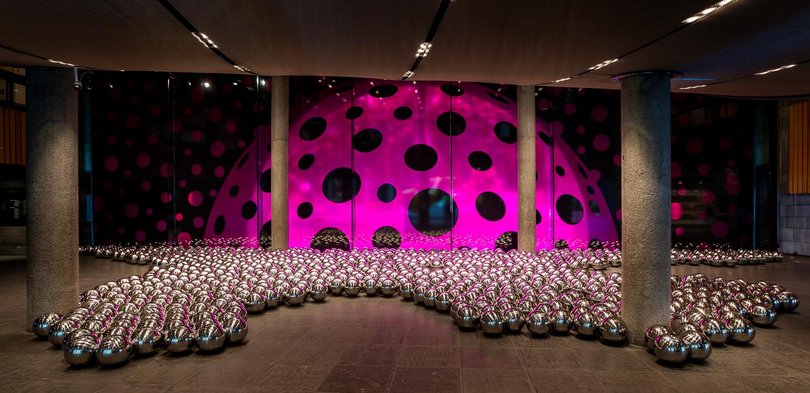
She claimed that her ideas had been systematically ripped off by better-known artists such as Andy Warhol, Claes Oldenburg and Lucas Samaras. Looking at works and dates, she may have had a case, but as a Japanese woman in an art scene dominated by American males, Kusama was always destined to be an outsider. Her outrageous happenings eventually wore out the patience of her audience, who began to see her as a sensation seeker and a shameless self-publicist, which wasn’t entirely false.
When Kusama returned to Japan in 1971, she intended to stage nude group performances to shake up her stiff, conservative country, but she didn’t stand a chance. In her homeland she found herself condemned as an immoral woman who had brought shame on the Japanese.
The early to mid-70s were the lowest ebb in Kusama’s career, as she struggled for recognition and suffered bouts of mental illness. Hospitalised in 1975, she would return to the clinic in 1977 and make it her permanent home. Through these tough years, Kusama never ceased being productive, writing a series of novels, making paintings and collages.
Gradually her star rose, with successive exhibitions in commercial galleries re-establishing her prominence in the Japanese art scene. But it wasn’t until 1993, when Tatehata successfully argued that Kusama should be the first Japanese artist to occupy the entire national pavilion at the 1993 Venice Biennale, that she re-emerged onto the world stage. Sceptics at that Biennale who dismissed Kusama as a has-been, would soon watch her rise to the very top of the tree.
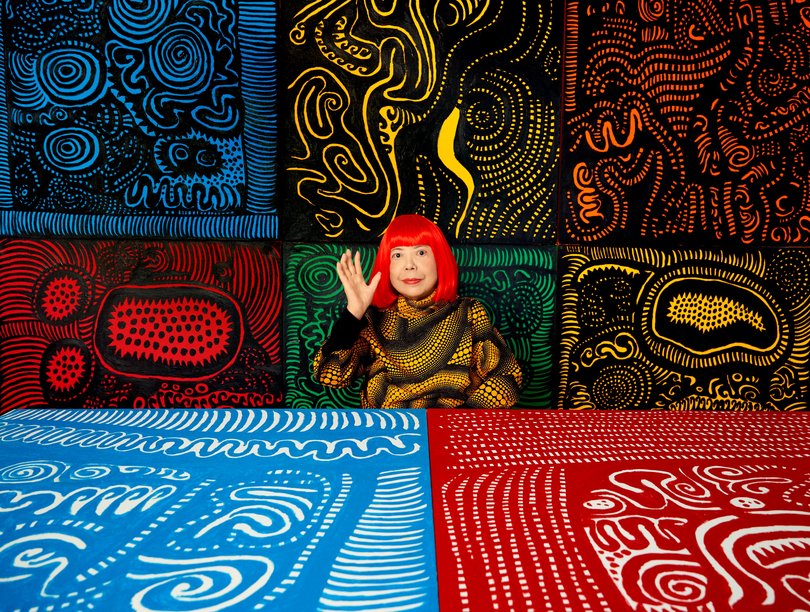
A show at the Los Angeles County Museum of Art in 1998, that travelled to other American venues, re-established Kusama’s reputation in the United States. Her next breakthrough came with an exhibition at the Hirsshorn Museum, Washington DC, in 2017, which featured a range of her Infinity Rooms. It exceeded all expectations, becoming a huge hit with the public. From this point, the art museums of the world have viewed her as an inimitable drawcard – an artist who appeals to the 99 per cent, not simply the cognoscenti of the contemporary art world.
It’s in this spirit the NGV has turned to Kusama as its summer blockbuster, with no effort spared in the presentation of the show or the design of the catalogue. The ten installation rooms may be the chief attractions, but the show gains traction from the display of early works, including her fashion designs, and even the letters she exchanged with Georgia O’Keeffe in the late 1950s. By the end we see Kusama not simply as a maker of commercially tuned product and spectacle, but as an artist whose nine decades of prodigious creativity seem to transcend mere humanity and render her the sole member of a new artistic species.
Yayoi Kusama
National Gallery of Victoria, Melbourne
Until 21 April
